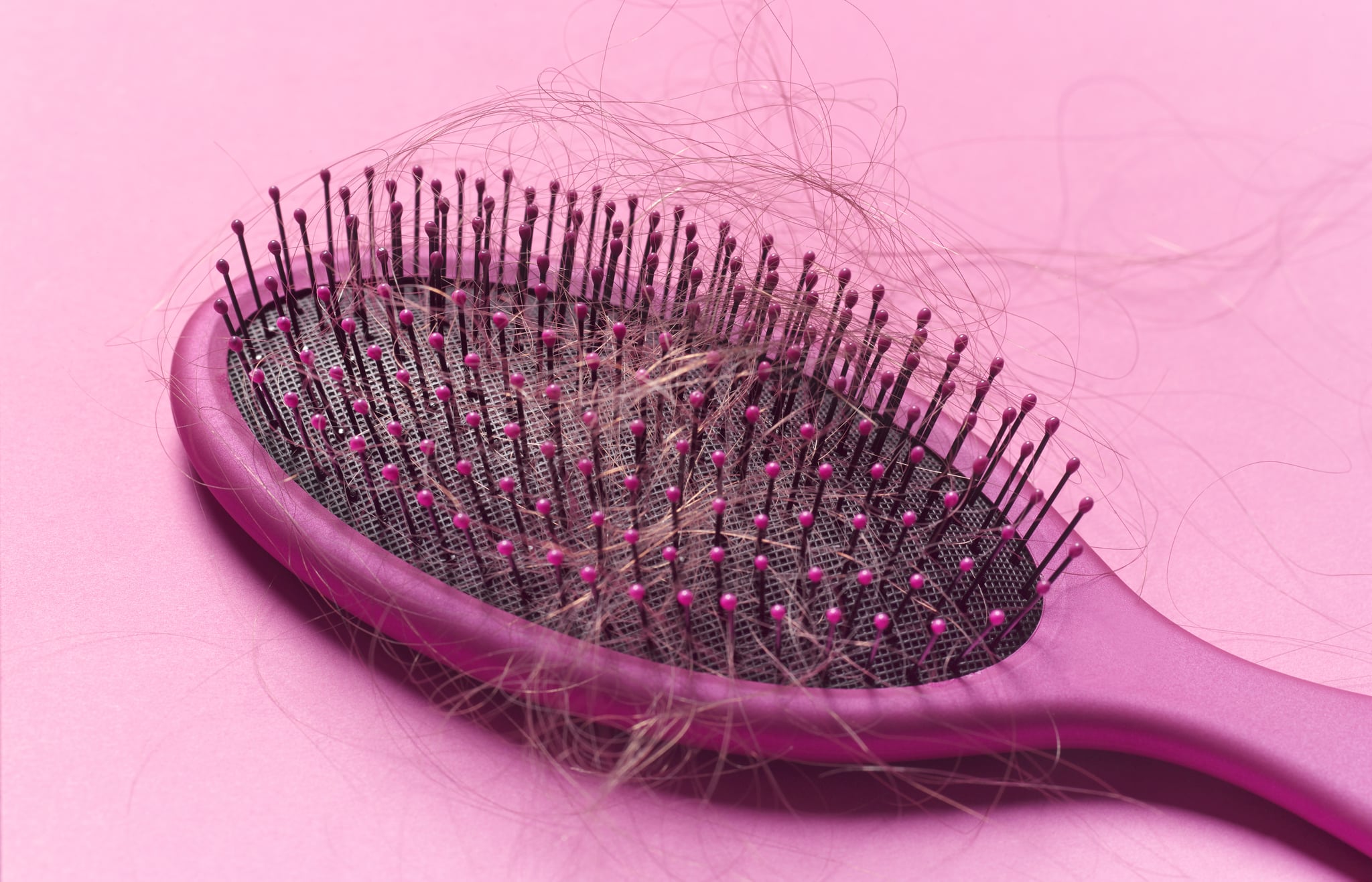
- It's extremely common for women to experience hair shedding.
- There is a difference between shedding and hair loss, however, experts say.
- Maintaining proper scalp care with these tips can minimize shedding.
Have you been noticing more hair falling out [1] every time you brush it? You might be experiencing shedding — something that happens to everyone. "It's normal to lose about 50 to 100 hairs [2] each day," said Kali Ferrara [3], a hairstylist based in New York City. But if you seem to be losing more hair than usual, there are a number of hormonal, mental, and physical culprits that could be responsible.
We consulted Ferrara and Bridgette Hill, a certified trichologist and founder of Root Cause Scalp Analysis [4], to find out why your hair might be falling out [5] as well as some best practices you can incorporate into your hair-care routine.
Hair Shedding vs. Hair Loss
According to the American Academy of Dermatology [6], there's a difference between hair shedding and hair loss. People can experience hair shedding after losing drastic amounts of weight, giving birth, experiencing a stressful or traumatic event, having an illness, or even getting off of birth control. As you recover from the physical, emotional, or hormonal shift that caused the shedding, your hair will gradually start to return to its regular fullness.
"All hair shedding is a form of telogen effluvium, or simply put, hair fallout triggered as a result of sudden shock to a body function," Hill said. "It can be stress induced, hormonally, mentally, nutritionally, or physically induced." Hair shedding can also be a symptom of a vitamin deficiency, particularly iron [7], or an autoimmune disorder [8], such as alopecia [9].
Hair loss, on the other hand, can be hereditary, or it can stem from harsh hairstyling products and too-tight braids, buns, and ponytails. A dermatologist can help you distinguish whether you're experiencing hair shedding or hair loss.
Ways to Prevent Hair Shedding
"Incorporating regular scalp care [10] is the most reliable preventative measure against hair shedding," Hill said. Similar to the pores on your face and body, the follicles on your scalp can become clogged due to buildup of oil, debris, and product. "A clogged follicle can become injured and not produce hair any longer," Ferrara said.
Keep your scalp clean with a biweekly scrub, such as the Kiehl's Amino Acid Scalp Scrub Detox Treatment [11] ($36). It contains a blend of 10 amino acids, salicylic acid, and sea salt and helps exfoliate an oily scalp without overdrying the skin.
When you shampoo, Hill recommends transferring your product into a bottle with a nozzle top so you can better stimulate the scalp. "You might also want to rethink the brush you use to blow-dry your hair," she said. "One that isn't gentle enough can inflame the scalp and cause hair breakage." She recommends a boar-bristle brush, or one that's a mix of plastic and boar bristles.
"The idea is to stay away from metal brushes, which can be abrasive to the hair fibre and scalp," she said. In addition to using a gentle brush, Hill also advises against wearing your hair in too-tight buns, ponytails, or cornrows, which can put tension on the hair.
"Proper diet, proper hair and scalp care, and less stress can all work wonders for your hair growth," Ferrara said. But if preshampoo treatments, looser ponytails, and gentler styling tools and products still aren't stopping your hair from shedding, it may be time to see a doctor to rule out any underlying medical conditions.